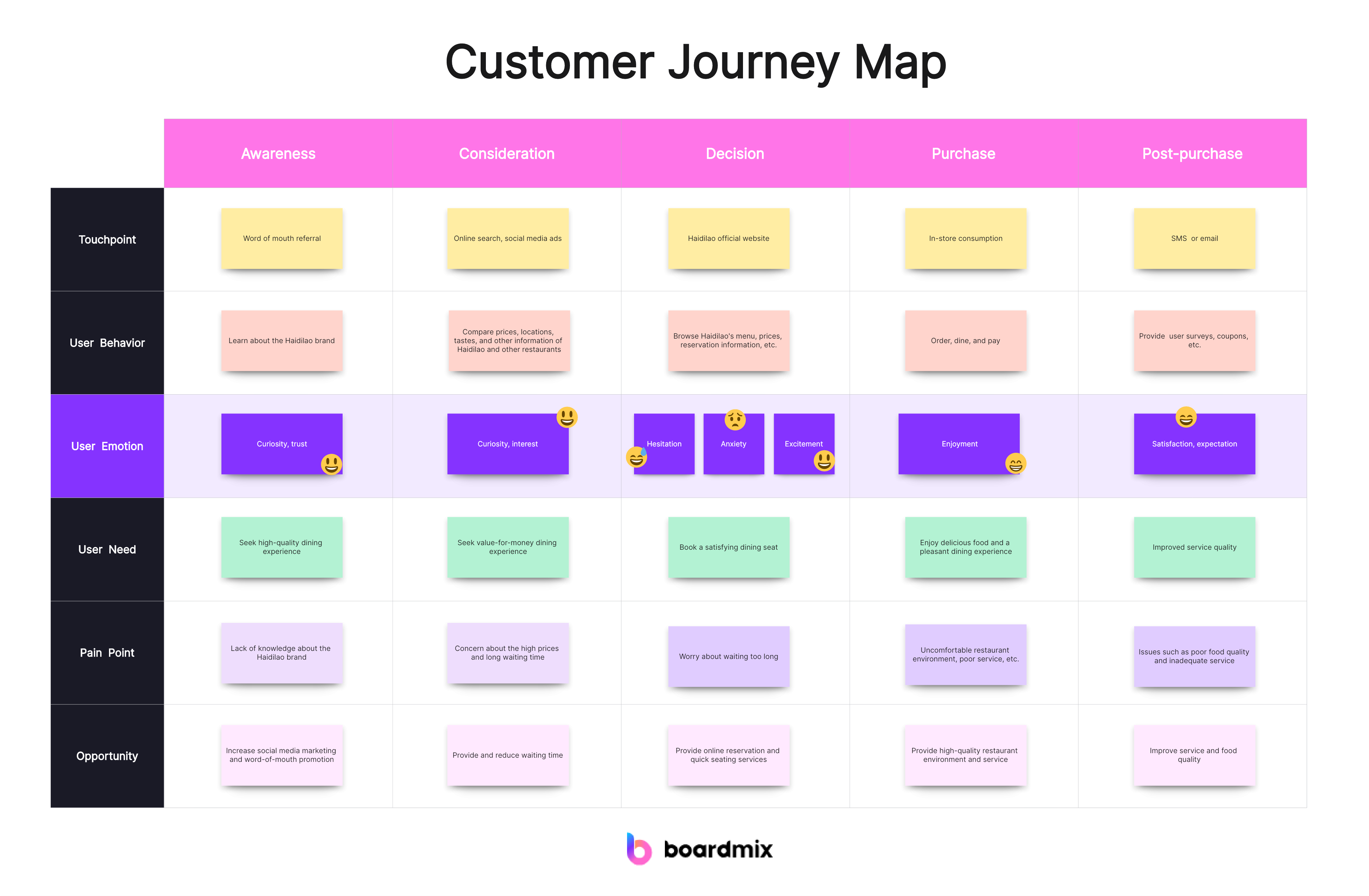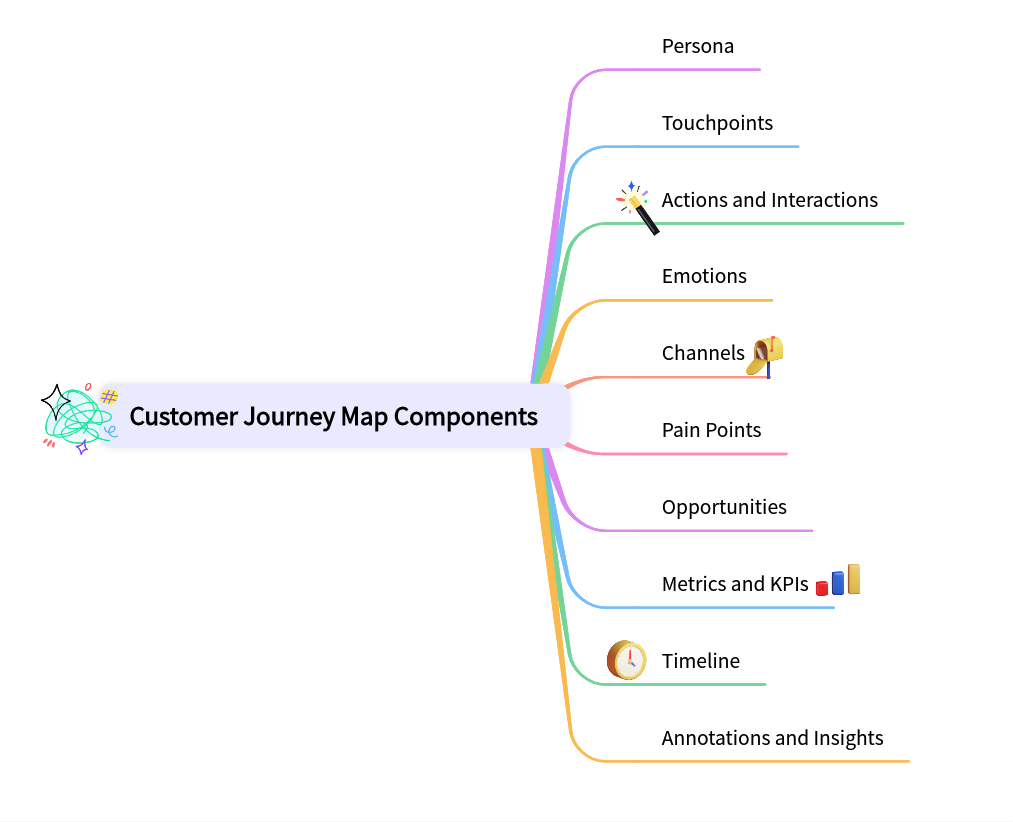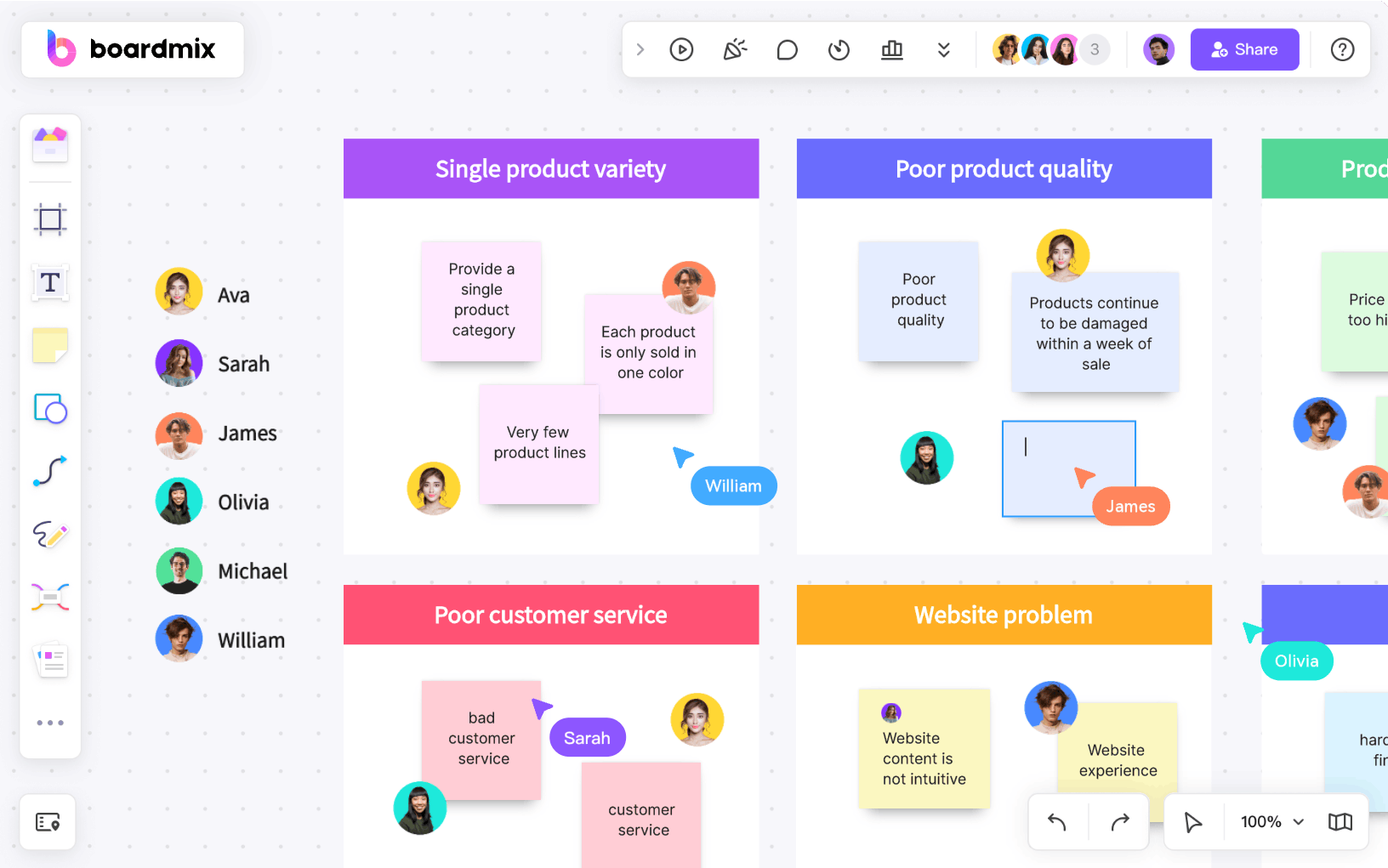In today's competitive business landscape, understanding and enhancing the customer experience is crucial for sustained success. One effective tool that businesses use to gain insights into their customers' interactions is the Customer Journey Map (CJM). A Customer Journey Map is a visual representation of the various touchpoints a customer has with a brand, from initial awareness to post-purchase engagement. In this article, we'll explore the significance of Customer Journey Maps and how businesses can leverage them to improve customer satisfaction and loyalty.
Part 1. What is a Customer Journey Map?
A Customer Journey Map is a visual representation or diagram illustrating the steps and stages a customer goes through when interacting with a product, service, or brand. It provides a comprehensive view of the customer's experience from the initial awareness and consideration phases through the purchase decision, post-purchase interactions, and potential advocacy.

The purpose of creating a Customer Journey Map is to gain a deeper understanding of the customer's perspective, emotions, and interactions at each touchpoint along their journey. This tool helps businesses and organizations identify key moments of engagement, pain points, and opportunities for improvement in the customer experience.
Creating a Customer Journey Map is a collaborative process that often involves input from various departments within an organization, including marketing, sales, customer support, and product development. By understanding the customer journey, businesses can make informed decisions to enhance customer satisfaction, loyalty, and overall success.
Part 2. Components of a Customer Journey Map
A Customer Journey Map typically includes several key components to comprehensively depict the customer's experience. While the specific details may vary depending on the context and purpose, here are common components found in a Customer Journey Map:

Persona: Description of the customer or user persona for whom the journey is being mapped. This includes demographics, behaviors, and goals.
Touchpoints: Identification of all the touchpoints where the customer interacts with the product, service, or brand. This can include online and offline channels such as websites, social media, physical stores, customer service, etc.
Stages: Division of the journey into stages that represent the chronological sequence of the customer's interactions. Common stages include Awareness, Consideration, Purchase, Onboarding, Usage, Support, and Advocacy.
Actions and Interactions: Detailed description of the actions and interactions the customer performs at each stage. This may include browsing a website, making a purchase, contacting customer support, etc.
Emotions: Mapping the emotional states of the customer at different stages of the journey. Understanding emotions helps in identifying pain points and areas of delight.
Goals and Motivations:
Identification of the customer's goals and motivations at each stage. This helps in aligning business strategies with customer needs and expectations.
Channels: Specification of the channels or platforms used by the customer at various touchpoints. This could involve digital channels like websites and mobile apps, as well as physical channels like in-store experiences.
Pain Points: Identification of obstacles, challenges, or frustrations that customers may encounter during their journey. Recognizing pain points is crucial for improving the overall customer experience.
Opportunities: Recognition of areas where the business can enhance the customer experience or provide additional value. This involves identifying positive interactions and turning them into opportunities for reinforcement.
Metrics and KPIs: Integration of relevant metrics and key performance indicators (KPIs) to measure the success of the customer journey. This could include conversion rates, customer satisfaction scores, and other relevant metrics.
Timeline: Visualization of the customer journey along a timeline, indicating the duration and sequence of events.
Annotations and Insights: Additional notes, insights, or annotations that provide context and interpretation for specific aspects of the customer journey.
Creating a Customer Journey Map involves collaboration among cross-functional teams to ensure a comprehensive and accurate representation of the customer's experience. The map is a dynamic tool that can be updated and refined over time based on feedback and changes in the business landscape.
Part 3. Benefits of Customer Journey Mapping
Customer Journey Mapping offers various benefits for businesses seeking to understand and enhance the customer experience. Here are some key advantages:
Improved Understanding of Customer Perspective: Customer Journey Mapping helps businesses see their products or services from the customer's point of view. This understanding is essential for aligning strategies with customer needs and expectations.
Identification of Pain Points: Mapping the customer journey highlights pain points and areas of frustration. This enables businesses to address and resolve issues that may hinder the overall customer experience.
Optimized Touchpoints: By visualizing all touchpoints in the customer journey, businesses can optimize each interaction for a smoother and more seamless experience. This contributes to increased customer satisfaction.
Enhanced Customer Engagement: Understanding the customer's goals and motivations at each stage allows businesses to tailor their communication and engagement strategies, fostering a more personalized and engaging customer experience.
Informed Decision-Making: Customer Journey Maps provide valuable insights that can inform decision-making across various departments, such as marketing, sales, product development, and customer support. This data-driven approach leads to more informed and effective strategies.
Consistency Across Channels: Businesses often operate across multiple channels (online, offline, mobile, etc.). Customer Journey Mapping helps ensure a consistent experience across all these channels, reducing confusion and improving brand perception.
Opportunity Identification: Customer Journey Maps highlight opportunities for improvement and areas where businesses can add value. Capitalizing on these opportunities can lead to increased customer loyalty and positive word-of-mouth.
Enhanced Customer Loyalty: A positive and well-managed customer journey contributes to increased customer loyalty. When customers have a smooth and satisfying experience, they are more likely to become repeat customers and brand advocates.
In summary, Customer Journey Mapping is a valuable tool for businesses seeking to create positive, consistent, and memorable experiences for their customers, ultimately leading to improved customer satisfaction and business success.
Part 4. Best Customer Journey Mapping Tool You Should Try
Boardmix is an innovative online whiteboard tool designed to revolutionize your customer journey mapping process. With a plethora of intuitive drawing templates at your disposal, Boardmix makes it easy to visualize and understand your customer's experience from their perspective. Unlike traditional methods, our tool allows for real-time collaboration, enabling teams to work together seamlessly no matter where they are located. Whether you're looking to identify pain points, improve touchpoints or streamline the overall journey, Boardmix is the ultimate solution for creating effective and impactful customer journey maps.

Key features of Boardmix:
- Real-Time Collaboration: Boardmix allows multiple users to work on the same project simultaneously, fostering teamwork and boosting productivity.
- Intuitive Drawing Templates: With a wide range of pre-designed templates, Boardmix makes it easy for anyone to create professional-looking diagrams and maps.
- Interactive Whiteboard: Boardmix's interactive whiteboard feature allows users to brainstorm, sketch ideas, and collaborate in a dynamic digital workspace.
- Remote Accessibility: Access your projects anytime, anywhere with Boardmix's cloud-based platform, making remote collaboration effortless.
- Secure Sharing: Share your work securely with team members or clients through encrypted links.
Part 5. Implementing a Customer Journey Mapping Strategy
Cross-Functional Collaboration: Involve teams from various departments, including marketing, sales, customer service, and product development, to ensure a holistic understanding of the customer journey.
Customer Feedback: Utilize customer feedback through surveys, reviews, and social media Continuous Monitoring and Adaptation: The customer journey is dynamic, and businesses must regularly update their CJMs to reflect changes in customer behavior, market trends, and technology.
Conclusion
In a customer-centric era, businesses must prioritize understanding and optimizing the customer journey. Customer Journey Maps serve as invaluable tools for gaining insights into customer experiences, identifying pain points, and ultimately fostering loyalty. By investing in the creation and continual refinement of CJMs, businesses can position themselves for long-term success in a competitive marketplace.
Experience a new level of efficiency in customer journey mapping with Boardmix. Our intuitive drawing templates and real-time collaboration features make it easier than ever to visualize your customer's experience and identify areas for improvement. Don't just take our word for it, try Boardmix today and see the difference it can make in your customer journey mapping process.













